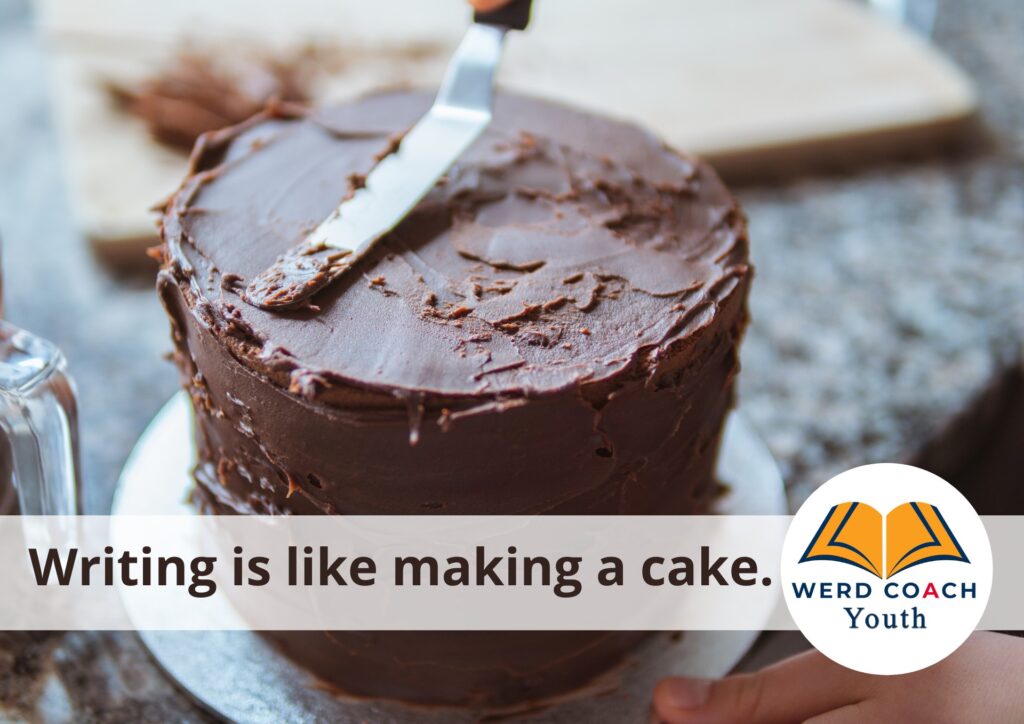
I like to use hands-on experiences to teach these kinds of things. If you’re willing, you can use the opportunity of making a cake or any other multi-step recipe to teach the writing process. Making a cake is the easiest one, though, because changes in the order of the steps can affect the way the cake comes out. That’s an important concept when teaching the writing process.
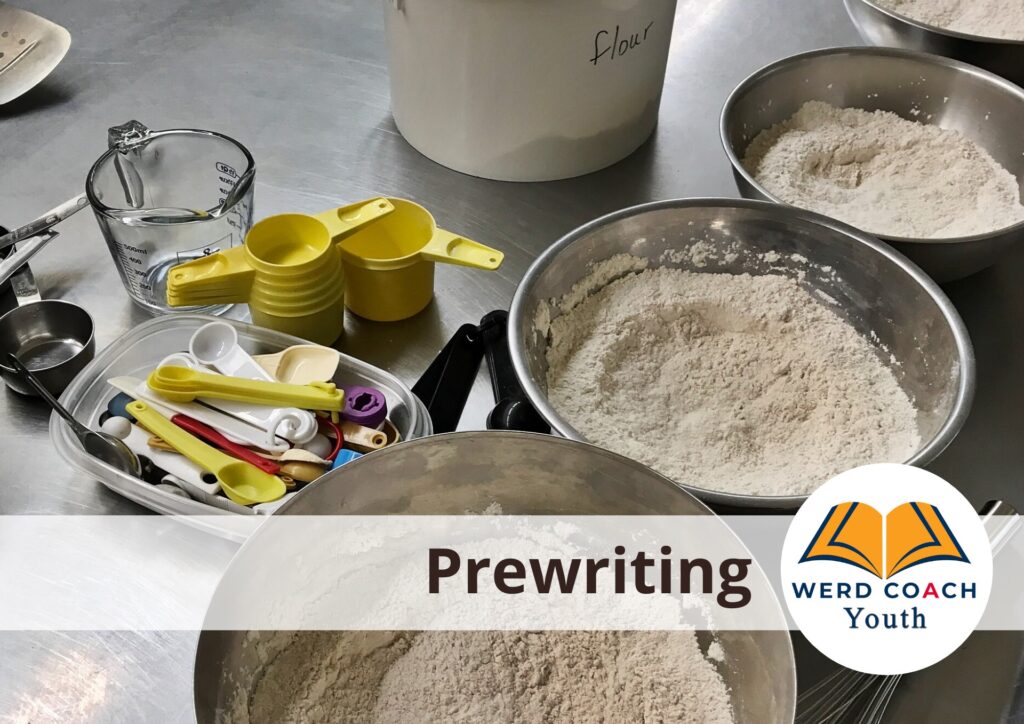
PREWRITING
*Cake* First you have to decide what type of cake you want to make then gather and measure out your ingredients. It’s also helpful if you select a recipe to work with.
*Writing* When writing, you first have to come up with a topic to write on then brainstorm ideas. Selecting a recipe is like creating an outline. The format and structure would help you when you’re writing.
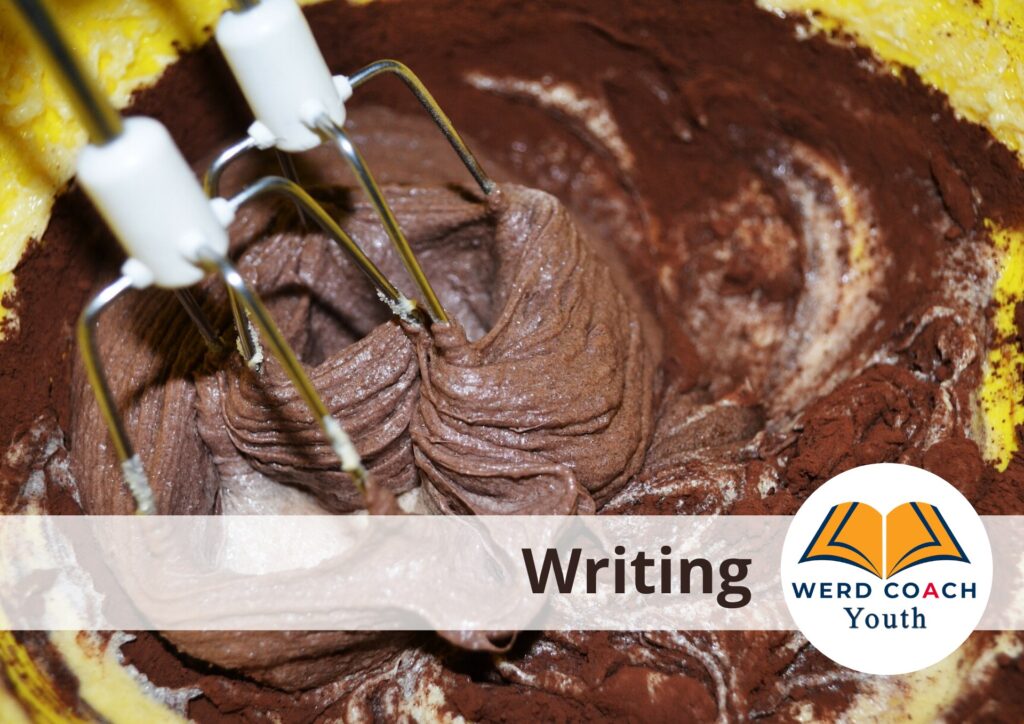
WRITING
*Cake* When making a cake, you need to mix the ingredients in a particular order in order to get a moist, fluffy end product. You also use utensils such as bowls, whisks, measuring spoons, and pans to get things just right.
*Writing* In writing, this can be likened to appropriate paragraphing, grammar, sentence structure and other mechanics that allow others to read your writing easily. Putting the information in the correct order (like the ingredients) also make for an end product that your readers will enjoy and benefit from.
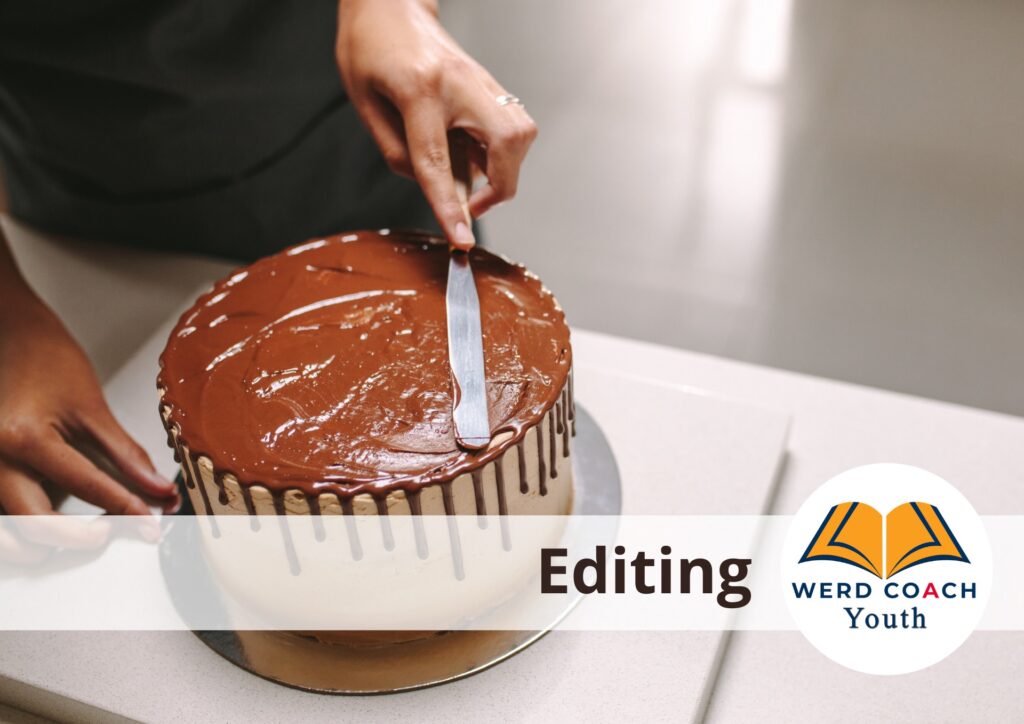
EDITING
*Cake* Once the cake is cooled and trimmed, it’s ready. It’s already a good cake and can be eaten as is, but it will look nicer and be received better by audiences if it’s frosted. Before the final touches, the base frosting is done to even out the surface of the cake.
*Writing* It’s the same way editing affects writing. A piece might contain good details and well structured information, but then there are spelling errors and punctuation errors etc. that would make it less readable and less appealing to readers. Editing helps you remove all of that and makes writing easier to read.
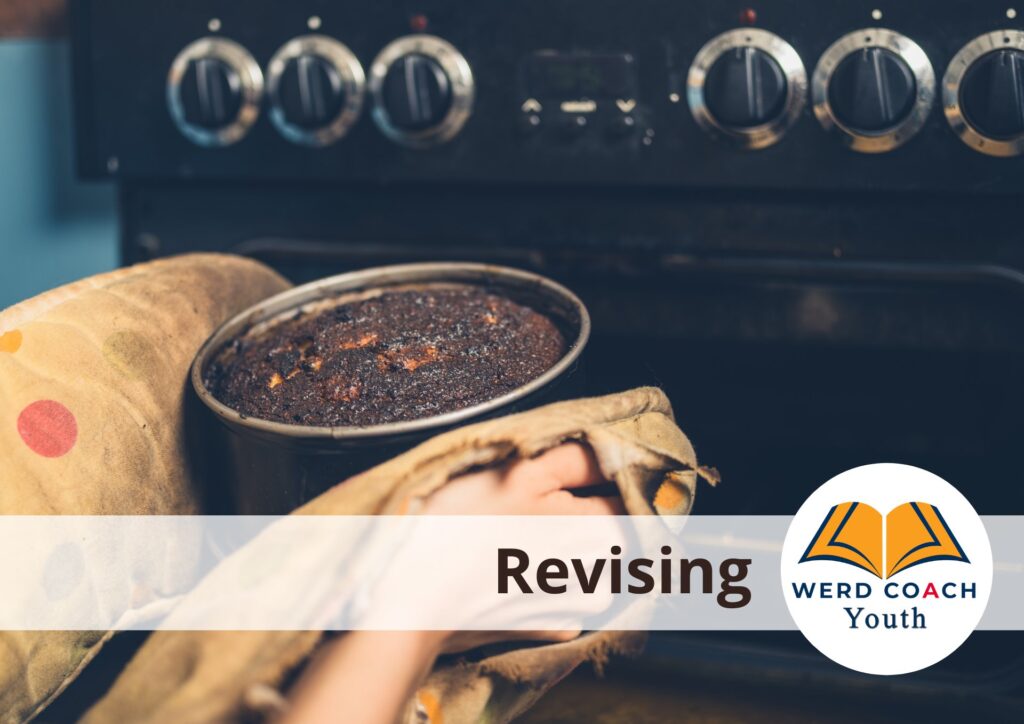
REVISING
*Cake* Baking the cake and preparing for frosting are important steps in getting a great cake. The temperature and baking time make a difference in the quality of cake in the end. After baking and cooling, sometimes you’ll have to trim the edges in order to make the cake look its best.
*Writing* Content alone will not make great writing. You have to revise what was written to ensure that the information is presented in the right order and the right way for audiences. Sometimes, revising might mean moving things around, removing some things, or even adding things.
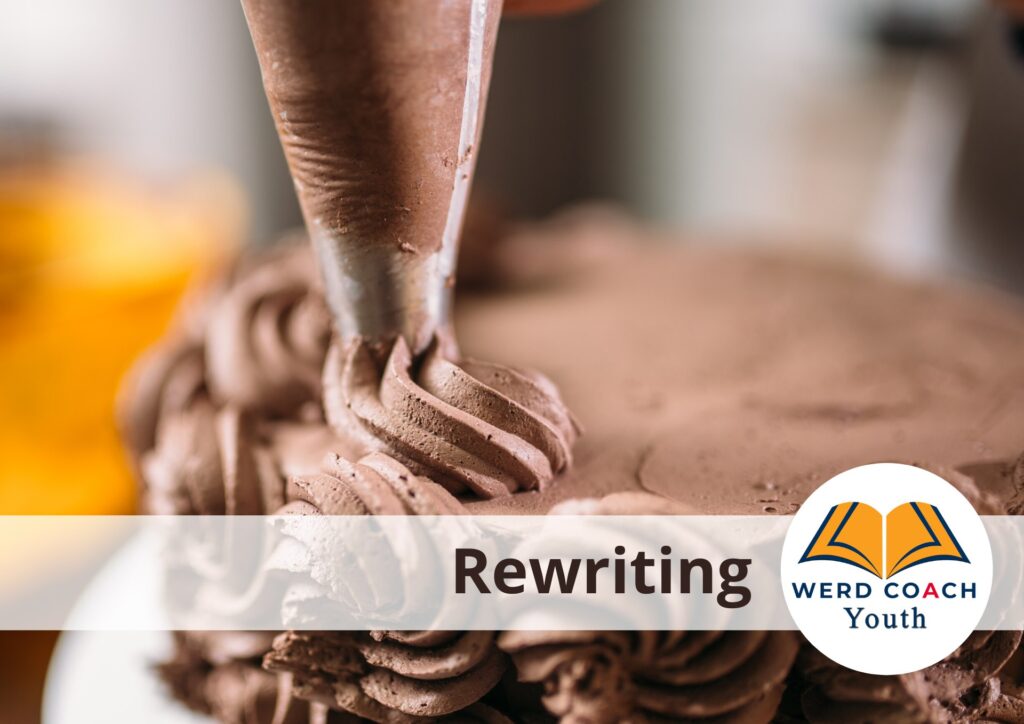
REWRITING
*Cake* Once the base is frosted, then the cake can be decorated and additional things added to make the cake look beautiful.
*Writing* Now you’re ready to present the final written piece. You must write it over to make it neat and presentable and blend in all the changes made during revising and editing. Readers will appreciate it.
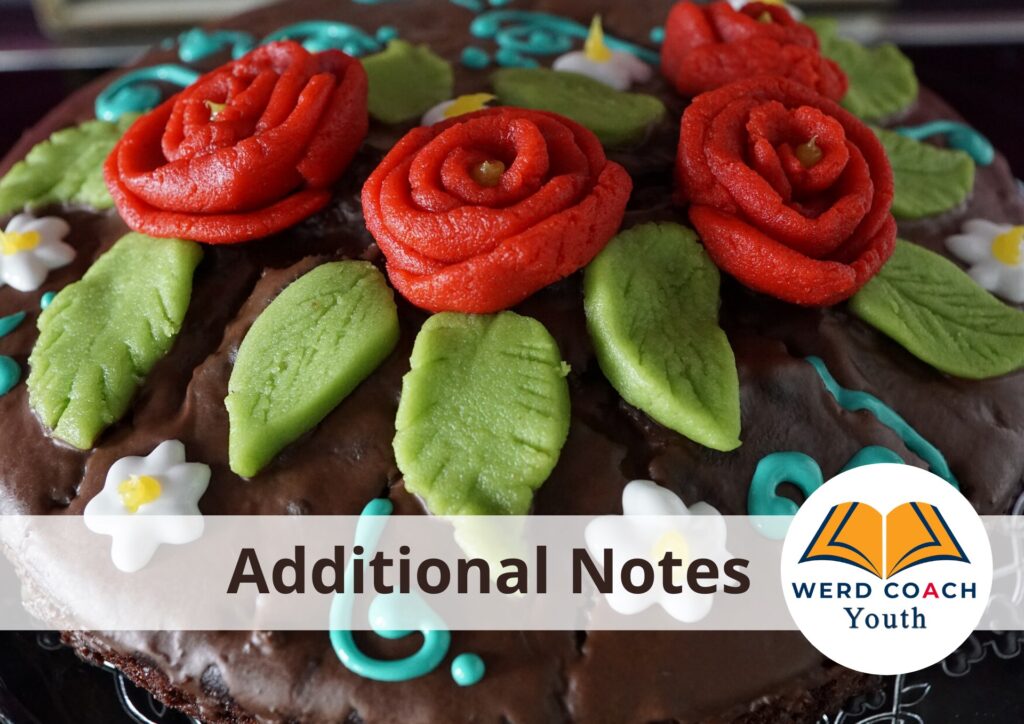
ADDITIONAL CONCEPTS
1. Different people like different types of cake, so you have to know who you’re baking the cake for. You must think about your audience. This happens before making the cake, in the prewriting stage.
2. Not everyone is going to like your cake (your writing) and that’s ok.
3. Writing is a skill, just like making cake is a skill. If you practice and learn different techniques, you’ll become a better writer.
4. Everyone can make good cakes if they follow recipes and instructions carefully. Great cakes come from those who add a little of their own flare and who study cakes and how to make them better. It’s the same with writers. Good writing can be learned. Great writing takes practice.
5. You can use different types of cakes to talk about different kinds of writing – narrative, descriptive, and expository.

